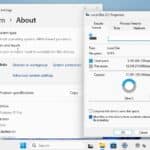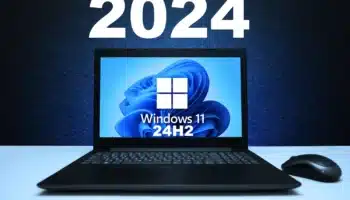Three questions enterprise leaders are asking about AI

Many leaders have been extremely aggressive about their AI strategies this year. However, despite the buzz generated by these technologies, most leaders are still scratching their heads trying to brainstorm real, practical ways to implement AI.
I’ve identified three common questions from leaders about AI for the enterprise and answered them with pragmatic guidance on the steps they can take today to make the most of these innovative technologies.
Busting three common DDoS myths

DDoS (distributed denial-of-service) protection occupies a peculiar spot in cybersecurity. While "newer" threats like AI-enabled cybercrime and the ongoing ransomware spree take up many airwaves, DDoS is relatively stable. For many, it's a known quantity. But this is where the problem lies. DDoS has been around for so long, and companies have been mitigating against it for all this time that a knowledge gap is slowly creeping in.
Because things change, bad habits get picked up, or common misconceptions go unchallenged and evolve into full-blown myths. Companies might be ‘protecting’ themselves under false pretenses, so it pays to revisit what you know, explore what’s changed and rebuild your knowledge of the threat landscape semi-regularly. So, with that in mind, let's explore three common myths we regularly encounter in the DDoS space.
Get 'The ChatGPT Revolution: How to Simplify Your Work and Life Admin with AI' (worth $13) for FREE

The ChatGPT Revolution is the ultimate quick-start guide to unlocking the power of AI tool ChatGPT. We’re on the edge of an AI revolution… but what does that mean for you? It’s time to get curious about how the latest tech can help you handle your everyday load, at work and at home!
Whether you’re overwhelmed by repetitive, time-consuming tasks or you’re simply looking for a fresh injection of creativity, ChatGPT is the virtual assistant that’s got your back.
The Deep Tech revolution -- Part 2: Meetups

Welcome back to Zama’s ‘Deep Tech Series’, exploring activities and initiatives that, while seemingly confined to companies and startups heavily technology driven, can potentially be applied to other organizations. Thanks to insights of experts in cryptography, privacy, blockchain and Machine Learning, the aim is to provide useful guidance on how to implement these activities in any kind of tech-driven company and beyond.
In the first installment, we looked at the advantages and added value of releasing white papers, a type of research and data based content that can share information about a product or technology while showcasing the company’s knowledge and expertise. In this follow up, we'll look at the importance of engaging and growing your tech community through meetups.
Sabrent launches USB-C Universal Docking Station (DS-UICA)

Today, Sabrent launches the USB-C Universal Docking Station (DS-UICA), which offers a range of features for users looking to expand the connectivity of their devices. Designed to work with laptops, ultrabooks, Chromebooks, Android phones and tablets, MacBooks, iPhones, and iPads, this docking station provides a variety of ports.
The DS-UICA can even prop up a smartphone or tablet. If you own a handheld gaming PC, such as the Steam Deck or Lenovo Legion Go, this could prove to be perfect dock to transform it into a makeshift desktop -- just put the PC into the cradle and connect the USB-C cable!
Four key ingredients to unlock HyperProductivity through workplace IT

Just a few years ago, it was hard to directly link the impact digital tools were having on productivity across a business. But as businesses have transformed and become more digitally mature, that’s all changed.
With metrics for tracking productivity ubiquitous, business leaders want to take it up to the next level. Now they are focused on HyperProductivity -- driving unprecedented levels of productivity across the organization. To date, businesses have tried a range of tactics to foster HyperProductivity, frequently involving discouraging workers from spending time on anything other than core tasks. As an extreme example, some businesses even installed uncomfortable toilets designed to limit time employees spend in the bathroom. Instead, they should be focusing on making it as easy as possible for employees to do their jobs, which is why optimizing workplace technology is a better path to explore.
Selecting the right storage for SQL Server high availability in the cloud

When it comes to the type of storage you might use for a cloud-based SQL Server deployment, all the major cloud providers provide a bewildering array of options. Azure offers Standard HDD as well as Standard SSD, Premium SSD as well as Premium SSD v2. Oh, and then there’s Ultra Disk. And AWS? The options are no less eye-glazing: ST1 and Standard, GP2 and GP3, IO1 and IO2.
Even if you could easily differentiate the offerings, what would be your best choice if you plan to configure your infrastructure for high availability (HA) -- by which we mean an infrastructure designed to ensure that your SQL Server database will be available and operating no less than 99.99 percent of the time?
The promise of generative AI depends on precise regulation

AI’s path to maturity lacks footing without the stamp of regulation. While the recent developments of the White House executive order and the EU AI Act are a good start, there’s a lot of progress to be made in terms of AI research and rule-making. Because if we want to unlock the full range of AI use cases, we’re going to need precise regulation, tailored to the unique needs of each sector.
Generative AI sparks an opportunity to transform every industry; a prospect that has prompted a flurry of AI innovation across verticals that will undoubtedly send ripple effects throughout the economy. McKinsey estimates that across 63 different use cases, generative AI could contribute between $2.6 trillion to $4.4 trillion to the global economy annually. But sector and use-case-specific regulatory framework is imperative if we want to harness this potential and ensure responsible, safe applications of generative AI.
Why not all AI is created equal and how the wrong choice could be hurting your business [Q&A]

AI seems to be everywhere at the moment. But despite the fact that it has become ubiquitous, it isn't all the same.
Steve Benton, VP of threat research for Anomali, talked to us about why not all AI is equal and what businesses need to consider to ensure they get the most from the technology.
Microsoft rebrands its iOS and Android web browser to Microsoft Edge: AI Browser

With, as yet, nothing by way of an explanation, Microsoft has decided to rename the iOS and Android versions of its Edge web browser.
Now known as Microsoft Edge: AI Browser the change of name does not appear to have been accompanied by any significant changes. The mobile web browser does, like so many Microsoft products, include its fair share of artificial intelligence-powered features as the company continues to bet big on the importance of AI.
Switch to Linux as your New Year's resolution -- delete Microsoft Windows 11 and install Nitrux 3.2.1 today!

The Linux community has a reason to celebrate today with the release of Nitrux 3.2.1 "se". This latest iteration of the popular operating system offers cutting-edge software updates, bug fixes, performance enhancements, and extensive hardware support.
Dubbed "se" for its focus on a "safer environment," this release bolsters security across the system. A notable change is the system-wide implementation of a rigorous password policy. However, in a candid admission, the Nitrux team clarifies that while they have made substantial security enhancements, they don’t claim invulnerability to breaches.
Steam ends support for Windows 7 and Windows 8

Windows 7 and 8 are now incredibly long in the tooth, and Steam has used the arrival of a new year to drop support for the aged operating systems.
The planned ditching of Windows 7 and Windows 8 was revealed by Steam-maker Valve way back in March. Now 2024 has rolled around, the company is staying true to its word. While this does not mean that games will simply stop working, it does mean that the Steam client for these versions of Windows will no longer be updated, and on-going functionality cannot be guaranteed.
Why enterprise networks need to move to an as-a-service model [Q&A]

For years, the enterprise has built bespoke networks to connect all company resources. These networks were slow to build, but once built did not change much.
That's changing as networks become more complex and dynamic. Workers are highly distributed, edge computing has grown, most enterprises now connect to multiple clouds, and connecting to partners and customers is increasingly common.
Run Windows 11 on a crappy PC with the ultra-lightweight tiny11 core for ARM64

We've written about tiny11 on numerous occasions, and we're constantly impressed by what has been achieved in whittling Windows 11 to a bare minimum. Now the even lighter weight tiny11 core for ARM64 has been updated after months of radio silence; it is now based on Windows 11 23H2.
tiny11 core is seriously stripped back, meaning its hardware requirements are absolutely minimal. But it is also so bare bones that it’s not really recommended for daily use – it is designed not as a replacement for tiny 11, but as a "quick-and-dirty testbed or development platform".
MX Linux 23.1 Raspberry Pi OS Respin launches with exciting features

In a significant development for Raspberry Pi users, the much-anticipated MX Linux 23.1 Raspberry Pi OS Respin has been officially released. This new version, labeled MX-23.1_rpi_respin, seamlessly blends the robust MX Tools and the extensive MX repositories from the mainline releases into a compact system image, tailored for the latest Raspberry Pi models.
The MX-23.1_rpi_respin is tested and optimized for Raspberry Pi 4, Pi 400, and the newly released Pi 5, ensuring compatibility and performance across these popular models. To get started, users will require a minimum of a 16GB memory card or a USB device, making it a highly accessible upgrade.
Most Commented Stories
© 1998-2024 BetaNews, Inc. All Rights Reserved. Privacy Policy - Cookie Policy.




